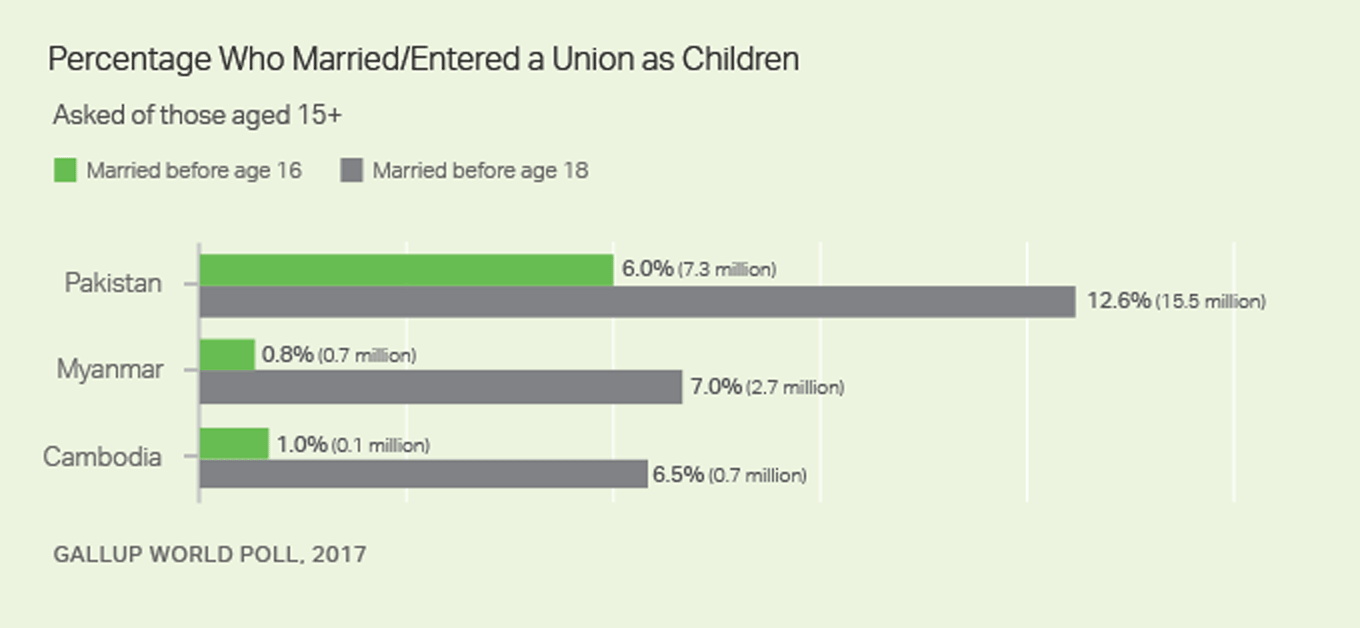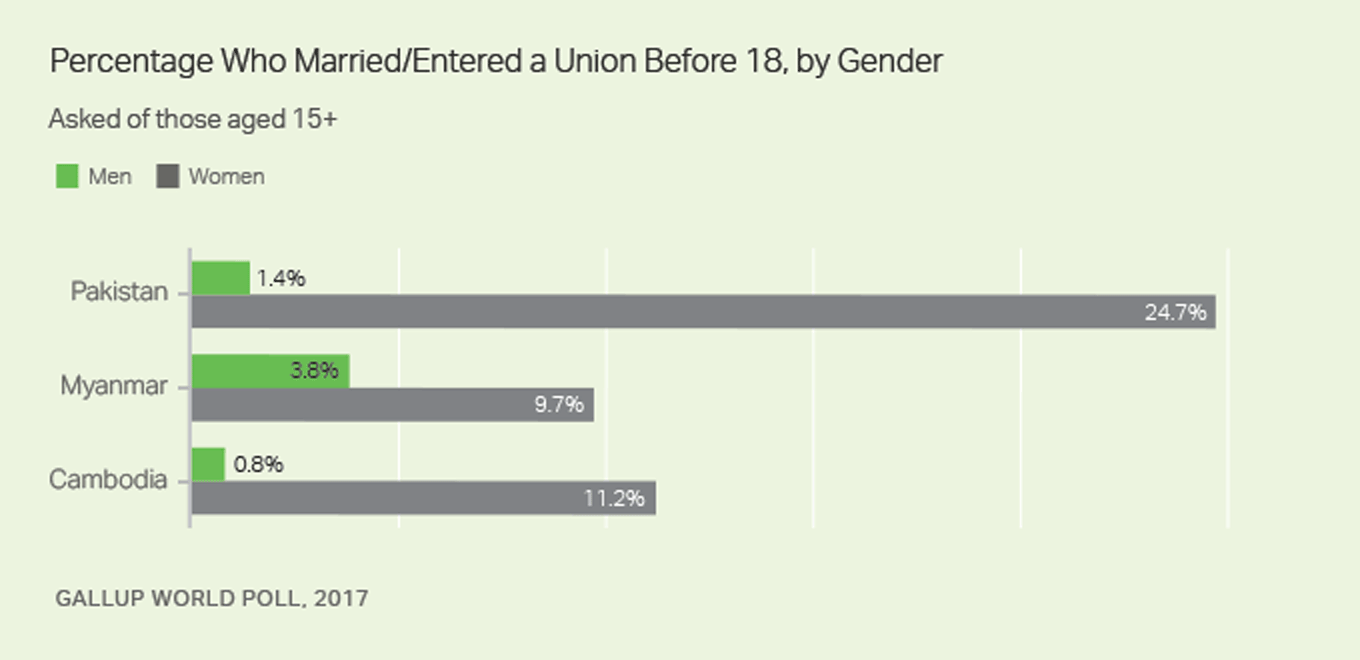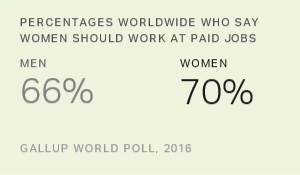WASHINGTON, D.C. -- Millions of children worldwide marry or enter a union before the age of 18, which can damage their prospects in life, as well as those of their offspring. To help the international community tackle the problem of child marriage, Gallup recently conducted three nationally representative surveys about child marriage in Asia, covering Cambodia, Myanmar and Pakistan. The results are as striking as is the lack of consistent, reliable data on this global problem.
In These Three Countries, 19 Million Married or Entered a Union as Children
Gallup asked people aged 15 and older what age they were when they started living with their first spouse or partner. Based on their responses, we estimate that there are 19 million women and men in these three countries who married or entered a union before the internationally accepted age of 18. Of these, Pakistan alone accounts for nearly 16 million, or 13% of its 15-and-older population.
These countries, like many others, make some exceptions to the minimum age of consent for marriage. In Pakistan, the legal age for marriage is 16 for women and 18 for men. Children in Cambodia as young as 16 can legally marry when parental permission is given. In Myanmar, the legal age is even younger for those with parental permission -- 14. Even when considering a lower age threshold of 16, there are still large numbers of men and women who married or entered a union as children, particularly in Pakistan, where 6% of the population aged 15 and older, about 7 million people, married or entered a union before age 16.

Young Girls Are Most at Risk
Child marriage affects both genders, but it is most potentially damaging to a girl's development. Child brides often drop out of school and become pregnant, and these early pregnancies have a greater risk of ending in maternal or infant death. Child brides are also at greater risk of sexual violence, abuse, social isolation and exploitation. In addition to being more vulnerable once they enter into marriage, girls are also much more likely to marry early than are boys. In Pakistan, one in four women (24.7%) were married before they turned 18, compared with just 1.4% of men. While less pronounced, this gender gap is also notable in Myanmar and Cambodia.

For these reasons, the international community established a goal to end child marriage by 2030 as one of the Sustainable Development Goals (SDG Target 5.3) and prioritized the prevalence of child marriage among girls as a key indicator of progress toward this target.
Child Marriage Rates Are Decreasing Worldwide -- or Are They?
Gallup's World Poll data and other sources show that child marriage rates are generally decreasing around the world. Gallup collected data on age at first marriage/union from a representative sample of residents aged 15 and older in Pakistan, Myanmar and Cambodia, which allows for a comparison of different age cohorts to analyze how child marriage rates have evolved over time.
Rather encouragingly, child marriage rates appear to be in a steady decline, particularly in Pakistan. Among Pakistanis in the 15-to-19 age group, only 8% say they married or entered a union before age 18, compared with 15% of Pakistanis aged 30 and older. Progress in Myanmar, on the other hand, seems less steady; there has actually been an uptick in child marriage rates among residents in the 15-to-19 age cohort.

Unfortunately, nationally representative surveys on child marriage are scarce, and measuring progress toward SDG Target 5.3 and other child marriage indicators is not easy. One major challenge is that many of the official surveys on child marriage are dated. For example, the most recent official survey in India, the National Family Health Survey (NFHS), dates back to 2006. Other countries don't have any official data -- and international research programs on the topic, including USAID's Demographic and Health Surveys (DHS) and UNICEF's Multiple Indicator Cluster Surveys (MICS), only provide partial geographic coverage. To date, there are no official figures on the prevalence of child marriage in 74 countries, including large ones such as Argentina, China, Myanmar and Russia.
The absence of regular, reliable data on child marriage across countries was noted recently in another report featuring Gallup data -- Global Estimates of Modern Slavery -- produced by the International Labour Organization and Walk Free Foundation, in partnership with the International Organization for Migration. This report includes data on forced marriage, defined as a marriage that is self-reported as "forced and without consent," irrespective of age. This concept, which overlaps child marriage, feeds into another SDG on modern slavery (SDG 8.7). While the Global Estimates of Modern Slavery report does not cover every instance of child marriage because of gaps in available data, Gallup's recent surveys clearly show that consistent, global measurement of the scale of child marriage is possible.
Jacqueline Joudo Larsen is Senior Research Manager at the Walk Free Foundation. Pablo Diego-Rosell is a Senior Researcher at Gallup.


